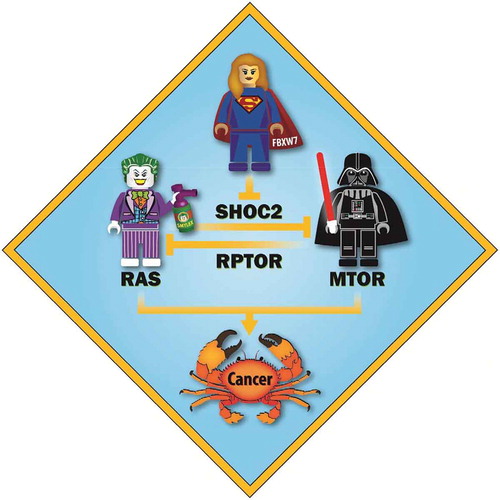Figures & data
Figure 1. Negative cross-talk between RAS and MTORC1, controlled by FBXW7. RAS and MTORC1 are 2 oncogenic pathways and their activation leads to cancer development. In a recent study we showed that RAS (shown as the Joker) and MTORC1 (shown as Darth Vader) negatively cross-talk with each other, which is regulated by the tumor suppressive FBXW7 E3 ligase (shown as Superwoman). Specifically, SHOC2, a RAS activator, competes with MTOR for RPTOR binding to inactivate MTORC1. Similarly, RPTOR competes with RAS for SHOC2 binding to inactivate RAS. FBXW7 controls both RAS and MTORC1 pathways via promoting ubiquitination and degradation of SHOC2. Thus, the FBXW7-SHOC2-RPTOR axis precisely regulates proliferation and autophagy. (Image created by Steven Kronenberg.).

